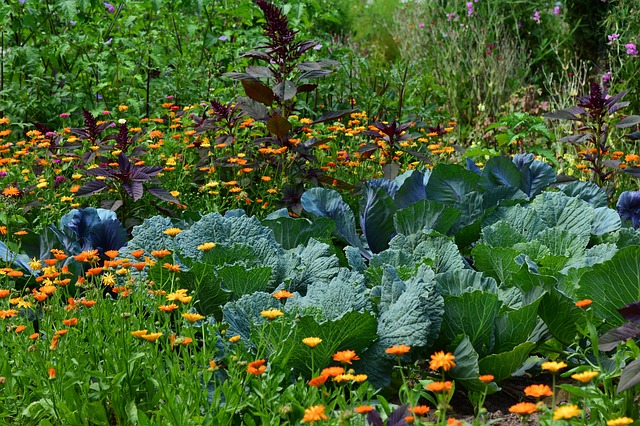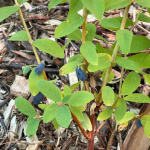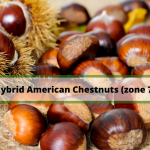Pawpaw in Permaculture: How to Incorporate Pawpaw into Your Food Forest
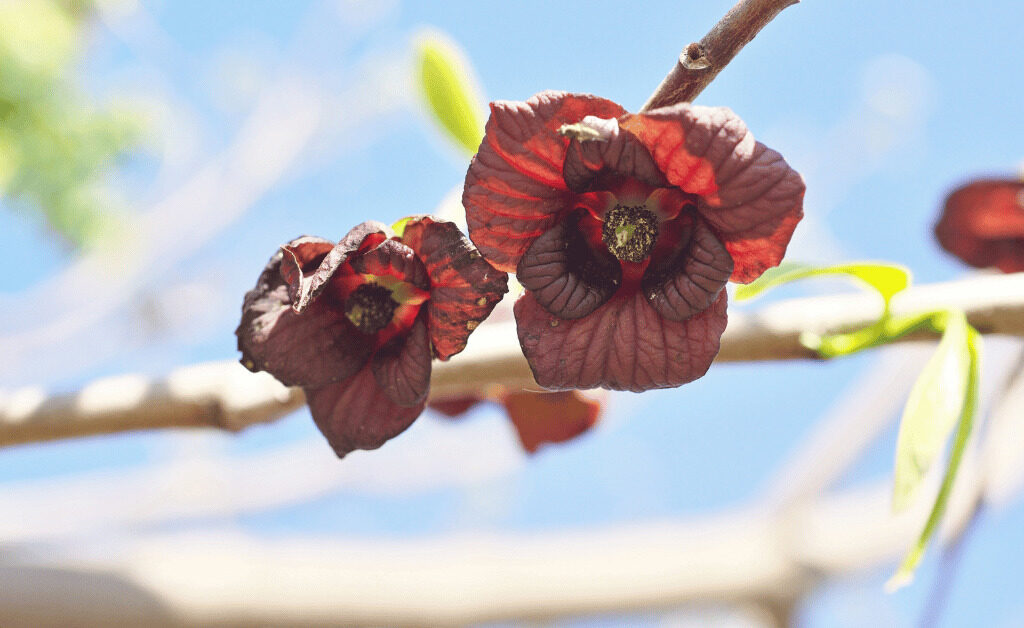
In the world of permaculture, diversity is key. The more varied our plantings, the more resilient our systems become. One often overlooked, yet incredibly valuable addition to any food forest is the Pawpaw (Asimina triloba). This North American native tree offers not only delicious fruit but also contributes significantly to the overall health and biodiversity of your garden.
Permaculture, a term coined by Bill Mollison and David Holmgren in the 1970s, is a design system for creating sustainable human habitats. It’s about working with nature, rather than against it. A food forest, one of the core concepts in permaculture, is a low-maintenance, sustainable plant-based food production system based on woodland ecosystems. It incorporates fruit and nut trees, shrubs, herbs, vines, and perennial vegetables, all working together in harmony.
The Pawpaw tree, with its broad, umbrella-like leaves and unique, custard-like fruit, is an intriguing component of this system. Often growing up to 20 feet (approximately 6 meters) tall, Pawpaw trees are not only a source of food but also serve as a habitat for various insects and birds, enhancing the biodiversity of your garden. This article will delve into the role of Pawpaw in permaculture design, its benefits as a companion plant, and how it contributes to biodiversity. Whether you’re a seasoned permaculturist or just starting your food forest journey, the Pawpaw tree is a fascinating species to explore.
Understanding Pawpaw
What is Pawpaw?
The Pawpaw (Asimina triloba) is a deciduous tree native to the eastern United States and parts of Canada. Often found in the understory of hardwood forests, it thrives in rich, well-drained soil and prefers a humid climate. The tree typically grows to a height of 10 to 20 feet (approximately 3 to 6 meters), but can reach up to 30 feet (approximately 9 meters) under optimal conditions. Its large, drooping leaves give it a tropical appearance, a stark contrast to its temperate habitat.
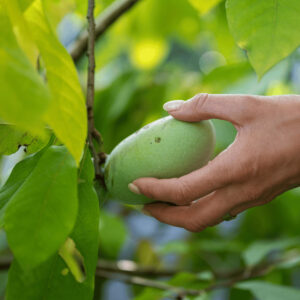
The Fruit of the Pawpaw Tree
The Pawpaw tree is most renowned for its fruit, which is the largest edible fruit native to North America. The fruit is typically 3 to 6 inches (approximately 7.5 to 15 centimeters) long and has a smooth, thin skin that turns from green to yellow or brown as it ripens. Inside, the flesh is creamy and custard-like, with a flavor that’s often described as a cross between a banana and a mango, with hints of melon and citrus. The fruit also contains several large, brown seeds that are easily removed.
Pawpaw in History and Culture
Historically, the Pawpaw tree has deep roots in American culture. Native American tribes revered the tree for its nutritious fruit and used its bark and leaves for medicinal purposes. The early European settlers also recognized the value of the Pawpaw, using the fruit for food and the wood for building materials. Even today, the Pawpaw holds a special place in rural communities, with Pawpaw festivals celebrating the harvest each fall.
Nutritional Value of Pawpaw
From a nutritional perspective, the Pawpaw fruit is a powerhouse. It’s rich in vitamins, minerals, and antioxidants. It’s particularly high in vitamin C, magnesium, iron, and dietary fiber. The fruit is also a good source of protein, a rarity among fruits. These nutritional benefits, combined with its unique flavor, make the Pawpaw a valuable addition to any permaculture garden.
Pawpaw’s Role in Permaculture
In addition to its fruit, the Pawpaw tree offers other benefits to the permaculture garden. Its large leaves create a dense canopy that provides shade for understory plants and helps to conserve soil moisture. In the fall, these leaves drop to the ground, adding organic matter and nutrients to the soil. The tree’s deep roots help to improve soil structure and prevent erosion. Furthermore, the Pawpaw tree is remarkably pest-resistant, thanks to the natural insecticides present in its leaves and bark.
The Role of Pawpaw in Permaculture
Pawpaw in Permaculture Design
Permaculture design is all about creating sustainable and self-sufficient ecosystems. In this context, the Pawpaw tree is a valuable asset. Its ability to thrive in various soil conditions, its tolerance to shade, and its deep-root system make it an excellent choice for permaculture gardens. The Pawpaw tree’s large, umbrella-like leaves provide ample shade, creating a microclimate that can benefit other plants in the garden. This shade can help to reduce water evaporation from the soil, maintaining soil moisture levels and reducing the need for watering.
Pawpaw’s Contribution to Soil Health
The Pawpaw tree also contributes significantly to soil health. Its fallen leaves decompose and enrich the soil with organic matter, improving soil structure and fertility. This process of natural composting recycles nutrients and promotes the growth of beneficial soil organisms, contributing to the overall health of the garden ecosystem. Furthermore, the tree’s deep roots help to prevent soil erosion, an important factor in maintaining soil health and productivity.
Pest Control with Pawpaw
Another significant advantage of the Pawpaw tree in permaculture design is its natural pest resistance. The tree contains acetogenins, compounds that have insecticidal properties. These compounds deter many common garden pests, reducing the need for chemical pesticides. This natural form of pest control aligns perfectly with the principles of permaculture, which emphasize working with nature and minimizing harm to the environment.
Pawpaw as a Food Source
Of course, one of the most appealing aspects of the Pawpaw tree in a permaculture setting is its fruit. The Pawpaw fruit is not only delicious but also highly nutritious, providing a valuable food source for both humans and wildlife. The fruit can be eaten fresh or used in a variety of recipes, from Pawpaw bread to Pawpaw ice cream. Having a Pawpaw tree in your garden ensures a yearly harvest of this unique fruit, contributing to food security and self-sufficiency.
Pawpaw’s Role in Polycultures
In permaculture, polycultures (the growing of multiple crops in the same space) are favored over monocultures. Polycultures mimic natural ecosystems, promoting biodiversity and resilience. The Pawpaw tree fits well into polycultures. Its shade can benefit shade-tolerant plants, its fallen leaves provide mulch, and its flowers attract pollinators, benefiting other flowering plants.
Incorporating the Pawpaw tree into your permaculture design not only adds a unique and valuable plant to your garden but also enhances the overall health and productivity of your ecosystem. In the next section, we’ll explore the benefits of Pawpaw as a companion plant and its contribution to biodiversity.
Absolutely, let’s move on to the next section which discusses Pawpaw as a companion plant:
Pawpaw as a Companion Plant
Understanding Companion Planting
Companion planting is a key principle in permaculture. It involves strategically placing plants together for mutual benefit. This could be due to a variety of reasons, such as pest control, maximizing use of space, or enhancing nutrient uptake. When it comes to Pawpaw, this tree can play a significant role as a companion plant in your food forest.
Pawpaw’s Companions
Pawpaw trees, with their large, spreading leaves, create a significant amount of shade. This makes them an excellent companion for plants that thrive in partial shade. Some potential companions for Pawpaw could include understory plants like currants, gooseberries, and ginseng. These plants can benefit from the shade provided by the Pawpaw tree, especially in regions with hot summers.
Benefits of Pawpaw as a Companion Plant
The benefits of Pawpaw as a companion plant extend beyond providing shade. The tree’s fallen leaves decompose to enrich the soil with organic matter, benefiting nearby plants. Additionally, the deep roots of the Pawpaw tree can help break up compacted soil, improving soil structure and making it easier for the roots of companion plants to penetrate the soil.
Furthermore, the Pawpaw tree’s natural pest resistance can also benefit its companion plants. The acetogenins in the tree’s leaves and bark deter many common pests, reducing the overall pest pressure in the garden.
Pawpaw and Polycultures
As part of a polyculture, Pawpaw trees can contribute to the overall health and resilience of the garden ecosystem. They can help create a layered structure in the garden, with taller trees like Pawpaw providing a canopy for lower-growing plants. This layered structure mimics natural forest ecosystems and promotes biodiversity.
Incorporating Pawpaw into your food forest not only provides you with a source of delicious and nutritious fruit, but also enhances the overall health and diversity of your garden. In the following section, we’ll delve deeper into how Pawpaw contributes to biodiversity.
Pawpaw and Biodiversity
The Importance of Biodiversity
Biodiversity, the variety of life in a particular habitat or ecosystem, is a crucial aspect of permaculture. A diverse garden is a resilient garden. It’s more resistant to pests, diseases, and extreme weather conditions. It’s also more productive, providing a wider range of foods, fibers, and medicinal plants. The Pawpaw tree, with its unique characteristics and benefits, contributes significantly to the biodiversity of a permaculture garden.
Pawpaw’s Contribution to Plant Diversity
In terms of plant diversity, the Pawpaw tree adds a unique element to the garden. Its large, tropical-looking leaves, its unusual flowers, and its distinctive fruit are unlike those of most other temperate fruit trees. This visual diversity can make the garden more enjoyable for humans, but it also has practical benefits. Different types of plants attract different types of beneficial insects and birds, promoting a balanced and healthy ecosystem.
Pawpaw and Animal Diversity
The Pawpaw tree, native to North America but now cultivated in various parts of the world, including Scandinavia, plays a significant role in supporting animal diversity. Its flowers attract a variety of insects, including several species of flies and beetles, which are crucial for pollinating the Pawpaw flowers. These insects, in turn, serve as food for birds and other creatures, contributing to a diverse food web.
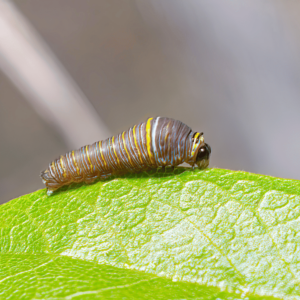
In its native regions, the Pawpaw tree is particularly associated with the Zebra Swallowtail butterfly, whose larvae feed exclusively on Pawpaw leaves. Planting Pawpaw trees can support this species and enhance garden biodiversity. However, it’s important to note that this specific interaction may not occur in regions where the butterfly is not native.
Even in areas where the Pawpaw isn’t native, incorporating it into your permaculture design can contribute to local ecosystems. Its flowers provide nectar for various insects, and its fruit can be a food source for many bird species. Additionally, the Pawpaw tree contributes to the overall health and diversity of your garden, offering delicious and nutritious fruit. Its role in permaculture, benefits as a companion plant, and potential contribution to biodiversity are adaptable to different climates and environments, making it a versatile addition to any garden.
Pawpaw and Soil Biodiversity
The benefits of Pawpaw to biodiversity extend below the ground as well. The tree’s deep roots help to improve soil structure, creating spaces for air and water that are essential for soil organisms. The fallen leaves of the Pawpaw tree decompose and contribute to the organic matter in the soil, providing food for a variety of soil organisms. These organisms, including bacteria, fungi, and earthworms, play a crucial role in nutrient cycling and soil health.
Pawpaw and Ecosystem Health
By contributing to plant, animal, and soil biodiversity, the Pawpaw tree enhances the overall health and resilience of the garden ecosystem. A diverse ecosystem is more stable and less susceptible to pests and diseases. It’s also more productive and more sustainable in the long term.
Incorporating the Pawpaw tree into your permaculture garden not only provides you with a source of delicious and nutritious fruit, but also contributes to the biodiversity and overall health of your garden. In the next section, we’ll provide practical tips on how to incorporate Pawpaw into your food forest.
Pollination Requirements of Pawpaw Trees
The Need for Cross-Pollination
Pawpaw trees are unique in their pollination requirements. Unlike many other fruit trees, Pawpaws require cross-pollination from another genetically different tree to achieve pollination and fruiting. This means that a single Pawpaw tree cannot pollinate itself; it needs the presence of another Pawpaw tree to bear fruit.
Understanding Pawpaw Flowers
The flowers of the Pawpaw tree are perfect, meaning they have both male and female reproductive parts. However, they are not self-pollinating. The flowers are also protogynous, meaning the female stigma matures and is no longer receptive when the male pollen is shed. This further emphasizes the need for cross-pollination in Pawpaw trees.
Pawpaw Pollinators
Interestingly, Pawpaws are not pollinated by bees, but by various species of flies and beetles that are attracted to their purplish-red flowers with a fetid odor. However, pollination is weather dependent, and cold, rainy, breezy weather is not conducive to fly activity and can result in low fruit set.
Planting for Successful Pollination
For good fruit set, each variety of Pawpaw must be fertilized with pollen from a different variety of Pawpaw tree. Therefore, it is recommended to plant at least two different grafted varieties of Pawpaws or two or more seedling Pawpaw trees that will be able to cross-pollinate one another. The entire tree is usually self-incompatible, meaning that pollen from one flower on the tree will not pollinate the stigma of other flowers on the same tree.
Absolutely, let’s move on to the next section which provides practical tips on how to incorporate Pawpaw into your food forest:
Incorporating Pawpaw into Your Food Forest
Choosing the Right Pawpaw Variety
Before planting Pawpaw trees in your food forest, it’s important to choose the right variety. There are many different varieties of Pawpaw, each with its own unique characteristics. Some varieties are known for their large fruit, others for their exceptional flavor, and others for their cold tolerance. Research the different varieties and choose one that suits your climate, soil conditions, and personal preferences.
Site Selection for Pawpaw
Pawpaw trees prefer a site with rich, well-drained soil and a pH of 5.5 to 7. They can tolerate shade, especially when young, but they produce more fruit in a sunny location. Choose a site that gets at least half a day of sun, and more if possible. The site should also be protected from strong winds, as Pawpaw trees can be sensitive to wind damage.
Planting Pawpaw Trees
When planting Pawpaw trees, it’s important to give them plenty of space. Pawpaw trees have a spreading growth habit and can reach a width of 15 to 20 feet (approximately 4.5 to 6 meters). Plant Pawpaw trees at least 15 feet (approximately 4.5 meters) apart to allow them room to grow.
To plant a Pawpaw tree, dig a hole twice as wide and as deep as the root ball. Place the tree in the hole, making sure that the top of the root ball is level with the soil surface. Backfill with the excavated soil, firming it gently around the roots. Water thoroughly after planting.
Caring for Pawpaw Trees
Pawpaw trees require minimal care once established. They are drought-tolerant, but they appreciate regular watering during dry periods. Mulch around the base of the tree to conserve soil moisture and suppress weeds.
Pawpaw trees do not usually require pruning, except to remove dead or damaged wood. However, you can prune to shape the tree if desired. Prune in late winter or early spring when the tree is dormant.
Harvesting and Using Pawpaw Fruit
Pawpaw fruit ripens in late summer or early fall, depending on the variety and climate. The fruit is ripe when it yields to gentle pressure and has a strong, fruity aroma. To harvest, simply twist the fruit off the branch or wait for it to fall naturally.
Pawpaw fruit is best eaten fresh, but it can also be used in a variety of recipes. The fruit can be used to make Pawpaw bread, muffins, smoothies, ice cream, and more. Remember to remove the large seeds before eating or cooking with Pawpaw fruit.
Pawpaw in Polycultures
As discussed earlier, Pawpaw trees can play a significant role in polycultures. Consider planting Pawpaw trees with other plants that can benefit from their shade, such as currants, gooseberries, and ginseng. You can also plant Pawpaw trees near plants that attract pollinators, such as flowers and herbs, to help ensure successful pollination of the Pawpaw flowers.
Incorporating Pawpaw into your food forest not only provides you with a source of delicious and nutritious fruit, but also contributes to the biodiversity and overall health of your garden. With their unique characteristics and benefits, Pawpaw trees are a valuable addition to any permaculture garden.
Pawpaw’s Role in a Sustainable Future
Incorporating Pawpaw into your food forest is not just about enhancing your garden’s productivity and biodiversity. It’s also about contributing to a more sustainable and resilient food system. In a world facing climate change, habitat loss, and other environmental challenges, permaculture offers a way forward. It’s a way to produce food while enhancing biodiversity, improving soil health, and reducing our impact on the environment.
The Pawpaw tree, with its multiple benefits and minimal care requirements, embodies the principles of permaculture. By planting Pawpaw trees, we can enjoy delicious and nutritious fruit, enhance our garden ecosystems, and contribute to a more sustainable future.
Conclusion
The Pawpaw tree, a native of North America, holds a unique place in the realm of permaculture. Its ability to thrive in various conditions, its contribution to soil health, its pest-resistant qualities, and its delicious, nutritious fruit make it a valuable addition to any food forest.
Incorporating Pawpaw into your permaculture design not only provides a source of food but also enhances the overall health and diversity of your garden. Its large, umbrella-like leaves create a microclimate that benefits other plants, its fallen leaves enrich the soil, and its flowers attract a variety of pollinators. The tree also serves as the sole host for the larvae of the Zebra Swallowtail butterfly, contributing to the biodiversity of your garden.
Planting a Pawpaw tree is more than just adding another species to your garden. It’s about embracing a sustainable way of growing food, one that works with nature rather than against it. It’s about contributing to biodiversity, improving soil health, and supporting local wildlife. And it’s about taking a step towards a more sustainable and resilient food system.
Whether you’re a seasoned permaculturist or just starting your food forest journey, the Pawpaw tree is a fascinating species to explore. Its unique characteristics and benefits make it a worthy addition to any garden. So why not consider planting a Pawpaw tree in your garden? You’ll be rewarded with delicious fruit and a healthier, more diverse garden ecosystem.


